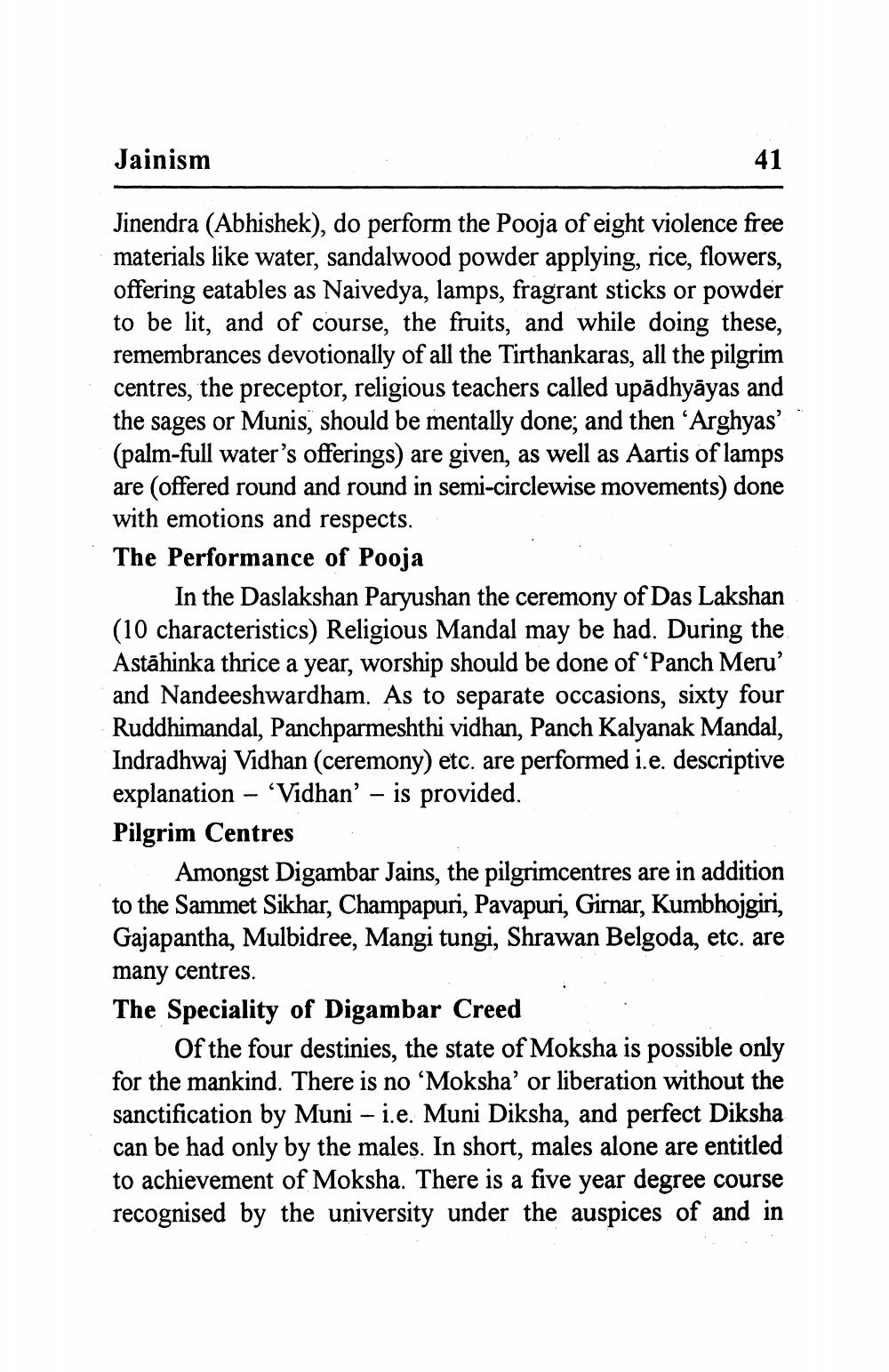________________
Jainism
Jinendra (Abhishek), do perform the Pooja of eight violence free materials like water, sandalwood powder applying, rice, flowers, offering eatables as Naivedya, lamps, fragrant sticks or powder to be lit, and of course, the fruits, and while doing these, remembrances devotionally of all the Tirthankaras, all the pilgrim centres, the preceptor, religious teachers called upādhyāyas and the sages or Munis, should be mentally done; and then ‘Arghyas' (palm-full water's offerings) are given, as well as Aartis of lamps are (offered round and round in semi-circlewise movements) done with emotions and respects. The Performance of Pooja
In the Daslakshan Paryushan the ceremony of Das Lakshan (10 characteristics) Religious Mandal may be had. During the Astāhinka thrice a year, worship should be done of ‘Panch Meru' and Nandeeshwardham. As to separate occasions, sixty four Ruddhimandal, Panchparmeshthi vidhan, Panch Kalyanak Mandal, Indradhwaj Vidhan (ceremony) etc. are performed i.e. descriptive explanation – ‘Vidhan’ – is provided. Pilgrim Centres
Amongst Digambar Jains, the pilgrimcentres are in addition to the Sammet Sikhar, Champapuri, Pavapuri, Girnar, Kumbhojgiri, Gajapantha, Mulbidree, Mangi tungi, Shrawan Belgoda, etc. are many centres. The Speciality of Digambar Creed
Of the four destinies, the state of Moksha is possible only for the mankind. There is no ‘Moksha' or liberation without the sanctification by Muni - i.e. Muni Diksha, and perfect Diksha can be had only by the males. In short, males alone are entitled to achievement of Moksha. There is a five year degree course recognised by the university under the auspices of and in




